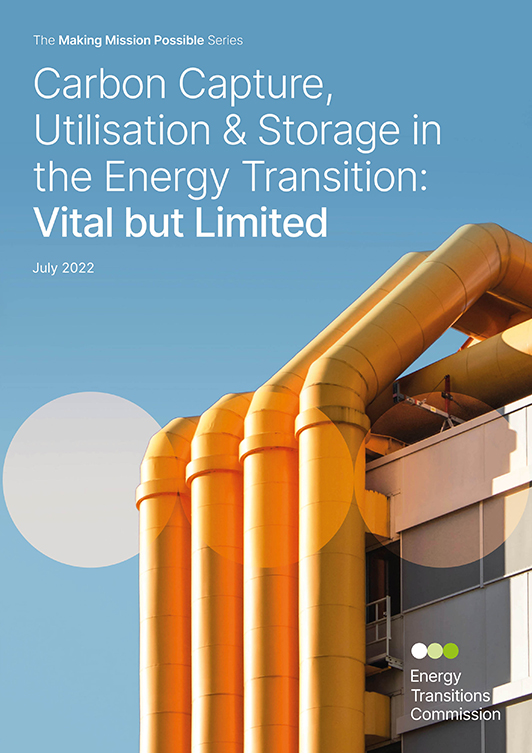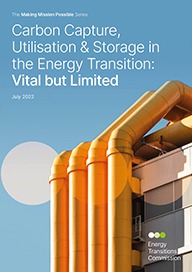Carbon Capture, Utilisation and Storage in the Energy Transition: Vital but Limited
July 2022
In its latest report Carbon capture, utilisation and storage in the energy transition: Vital but limited, the ETC describes the complementary role carbon capture, utilisation and storage (CCUS) has alongside zero-carbon electricity, clean hydrogen and sustainable low-carbon bioresources in delivering a net-zero economy by mid-century as these solutions alone cannot reduce gross emissions completely to zero.
In addition, it is almost certain that cumulative CO2 emissions between now and 2050 will exceed the “carbon budget” consistent with a 1.5°C climate objective. Therefore carbon removals will be required alongside deep and rapid cuts in emissions – and CCUS technologies will be critical to delivering engineered carbon removals such as DACCS and BECCS.
Carbon Capture and Utilisation or Storage (CCUS) must therefore play three vital but limited roles in the energy transition:
- To decarbonise those sectors where alternatives are technically limited (e.g. industrial processes which by their nature produce CO2 such as cement);
- To deliver some of the carbon removals that are required in addition to rapid decarbonisation if global climate objectives are to be achieved;
- And to provide a low-cost decarbonisation solution in some sectors and geographies where CCUS is economically advantaged relative to other decarbonisation options locally or captured carbon could be a useful input to a product.
The ETC’s analysis estimates that by 2050, the world will likely need to capture and either use or store 7-10 Gt per year of CO2 – up from today’s 40 Mt per year. The current pace of development of CCUS is far short of what is required. Early deployment in the 2020s is essential to achieve sufficient capacity by 2050 and reduce overall costs. A combination of private investment and supporting public policy is required to ensure that CCUS can play its vital but limited role going forward.
This report is part of the ETC’s wider Making Mission Possible Series – a series of reports outlining how to scale up clean energy provision within the next 30 years to meet the needs of a net-zero greenhouse gas emissions (GHG) economy by mid-century. The reports in the series analyse and set out specific actions required in the next decade to put this net-zero by 2050 target within reach.














